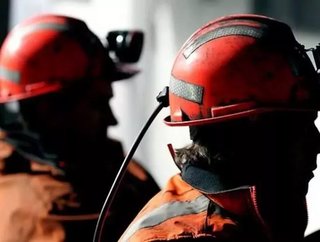How-To: Increase Profitability and Productivity with Smart Rostering

Shiftwork and roster arrangements on mine sites has been a growing area of interest for many over the last couple of years. However, it is a complex science, and it is definitely not a one-size-fits-all solution. We caught up with Ian Tanner, project manager with Shiftwork Solutions, who has spent 10 years specializing in management consulting with organizations and their employees to improve their shiftwork arrangements. He has a background in operations management with industrial and resource companies.

Given the current state of the mining industry, why are shiftwork arrangements so important right now for any company operating within the sector?
We're seeing the mining industry focus more on their operating costs right now, and are less pre-occupied with the demands of recruiting and retaining employees.
Both owner and contract operators are lowering their controllable cost base, and while aware that changing shiftwork arrangements can help, they're often surprised by the number of improvements, and the value.
It's also an important option because of the risk factor. One of the attractions of making changes to structures, such as shiftwork arrangements and rosters, is the greater ability to lock in the benefits compared to other improvement initiatives.
Fortescue Metals just announced in the news last week that 60 workers at Cloudbreak Mine will move to part-time job sharing for the next six months. How much of an impact on a mine’s profitability can making roster changes like this have?
Mining operations are aware that periods of low profitability are generally followed by improved conditions when they'll again need skills and staffing. Introducing part-time positions temporarily has the advantage of retaining more skilled employees in the business during times like these. Some FIFO employees may also welcome additional time-off and a more family-friendly life style for a period. So the profitability improves in the short term by saving labor costs and in the long term by bouncing back more strongly.
There are many options like this, which can impact a mine's profitability, but also depend on employee support. In our experience, employee interests are still a key factor to understand and to build into the equation when changing shiftwork arrangements. Even when the change is a difficult one for employees, there are approaches you can use for a successful change, in our experience.
What are the biggest considerations a mining operation should have when designing shiftwork rosters?
Achieving a balanced design is a big consideration in our experience because it helps the rosters to stand the test of time. The business will have priorities for the rosters, employees will certainly have interests around their shiftwork, and there are also health, fatigue and alertness considerations. Striking the right balance, even when costs and productivity are paramount, is still the best approach.
Where this balance lies is often different from one mining operation to another, because of their employee mix, operational differences, and fatigue factors such as location. We recommend considering the picture for each operation individually. A roster designed for shiftwork conditions at one mine will not be optimal for another mining operation.
Part of Shiftwork Solutions capability is advisory services surrounding health, safety, fatigue and lifestyle training. Obviously 2014 was a poor year for safety in the mining industry, with numerous fatalities. What can and should miners and METS companies be doing differently to bring these numbers back down?
Fatigue and lack of employee alertness can certainly contribute to safety incidents, and in turn they are influenced by shiftwork arrangements and by employee lifestyle choices. Many mining operations are remote and not only have to consider their roster design, but also the effects of long distance commuting and FIFO lifestyle.
There are quite a number of factors to consider. One of our founders was a pioneer in sleep research who noticed that many who came to his sleep clinic were shift workers. So he set out on a mission to improve roster design - you could say that this mission is in our DNA at Shiftwork Solutions.

We find that taking a risk-based approach to manage fatigue impacts is sensible because it allows the comination of many shiftwork factors to be considered. For example, the fatigue risk from longer work cycles used in FIFO can be offset by the better sleep opportunity provided in a well-managed camp. A good approach is to first understand all the factors existing in your shiftwork situation, and to manage the overall risk by controlling or offsetting the high risk factors.
What do you see as the biggest opportunities for the mining industry in Australia in 2015 to improve productivity? How smart are mining organizations about using roster options to actually drive productivity?
Some key opportunities exist after the resources boom in areas such as:
• Reducing complexity which has developed from the use of too many different rosters in one mining operation;
• Aligning rosters across different functions to improve supervision, teamwork, communication and support which can drive productivity;
• Aligning the timing of roster work cycles with your business performance cycles - this improves ownership and accountability in shift crews for meeting performance targets.
This is an emerging area and there are mining organizations starting to pick up on it to improve performance, both production and maintenance.
Previously published at Austmine.com.au
- Brightstar, Eldridge and Claure acquire AusencoSupply Chain & Operations
- First Quantum contracts with MECS to cut emissionsSupply Chain & Operations
- Tin production at Andrada Mining reaches record levelsSupply Chain & Operations
- Ternium plans to build US$3.2bn steel plant in MexicoSupply Chain & Operations






